Avocados are a plant-based food filled with loads of good stuff. Learn the nutritional benefits beyond their healthy fats, as well as how to choose, keep and prepare avocados.
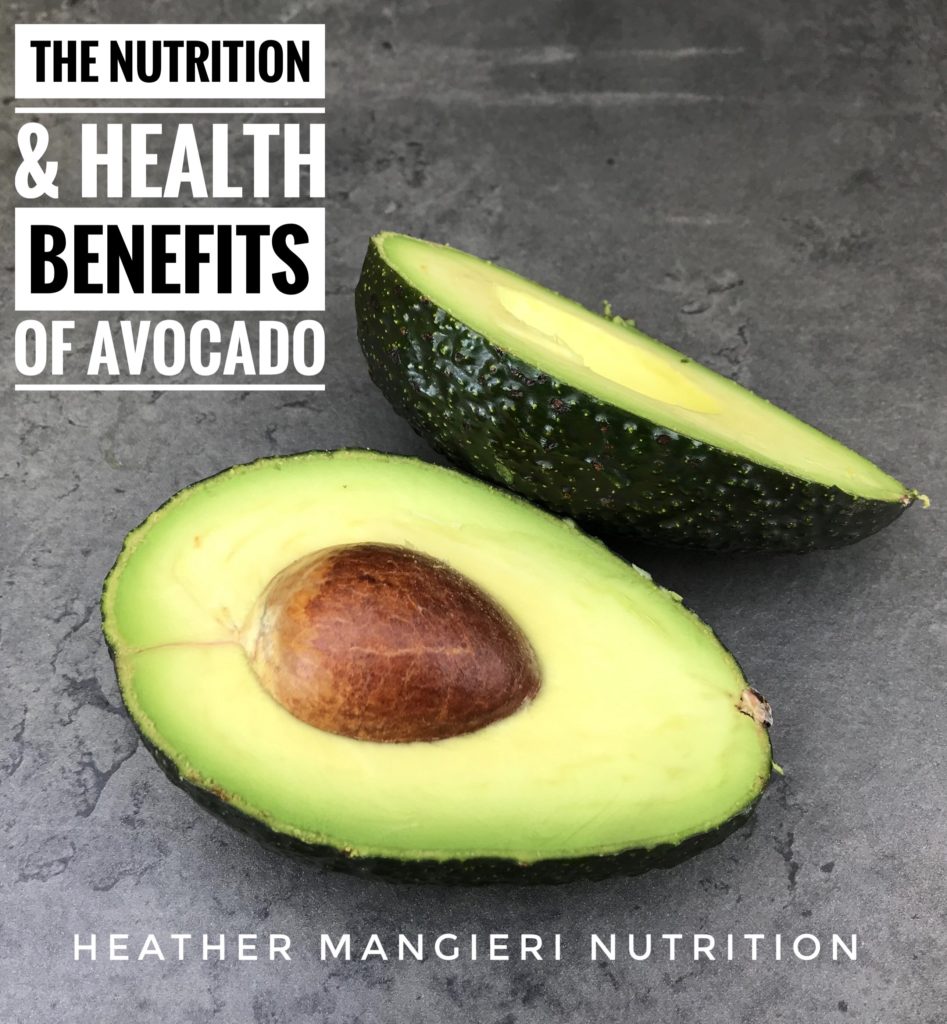
Avocados: the fruit with fat?
That’s right! Avocados are not your average fruit. By providing heart-healthy fats, avocados break the mold when it comes to the nutritional content of a fruit. So what does this mean? Read on to learn about the many benefits of avocados and how to properly incorporate this higher calorie fruit into your healthy eating plan.
The Nutrition Found In Avocados
One serving (1 oz) is equal to 1/5 of a medium avocado, but that may be difficult to visualize. An easier way to think of it is, one serving of an avocado is equal to 2 tablespoons or 2-3 thin slices. Here is the nutritional breakdown of a serving of avocado and one whole avocado. You can see how quickly the calories and fat grams add up, so be sure to keep portion in mind when enjoying this fruit.
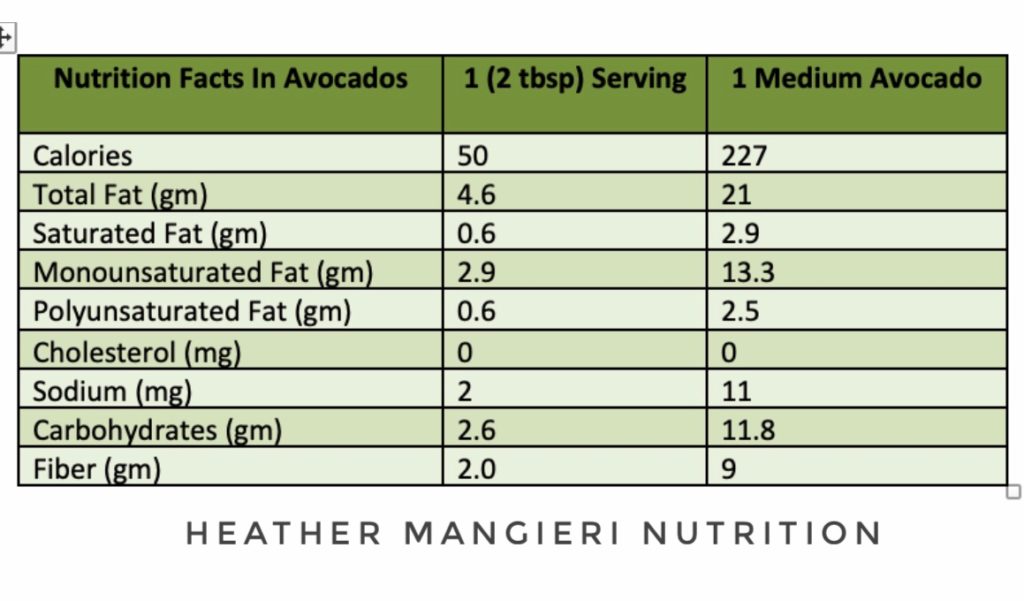
The Healthy Fats In Avocado
Avocados are loaded with heart-healthy monounsaturated fatty acids. Those healthy fats, unlike their saturated counterparts, have been shown to elicit positive changes in blood lipid profiles. Replacing saturated fats with unsaturated fats, such as those found in avocados, may reduce LDL (“bad”) cholesterol and raise HDL (“good”) cholesterol, therefore reducing the risk of cardiovascular disease. The most important word in the previous sentence is replacing. Adding unsaturated fats to a diet that is already high in total fat is not a smart choice.
See the chart below to compare 2 tbsp. of avocados to 2 tbsp. of some other common high-fat options.
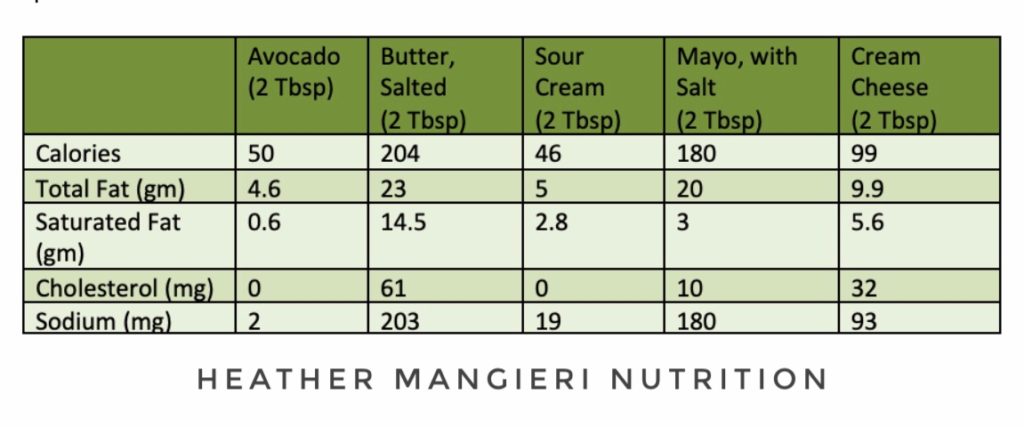
The healthy fats in avocados not only provide their own benefits, but may also increase the benefits you obtain from other foods. Some nutrients need fat to be properly absorbed. Therefore, if you’re eating a colorful, but fat-free salad, you won’t be able to absorb all of the beneficial nutrients on your plate. A study in the Journal of Nutrition showed that adding avocados can help to enhance the absorption of certain nutrients, such as carotenoids.
That said, it’s important to remember that more isn’t always better. Even though the fat in avocados is considered to be healthy, it is still fat. At 9 calories per gram, fat is the most calorically-dense macronutrient. Portion size becomes more important when eating avocados than when eating many other fruits.
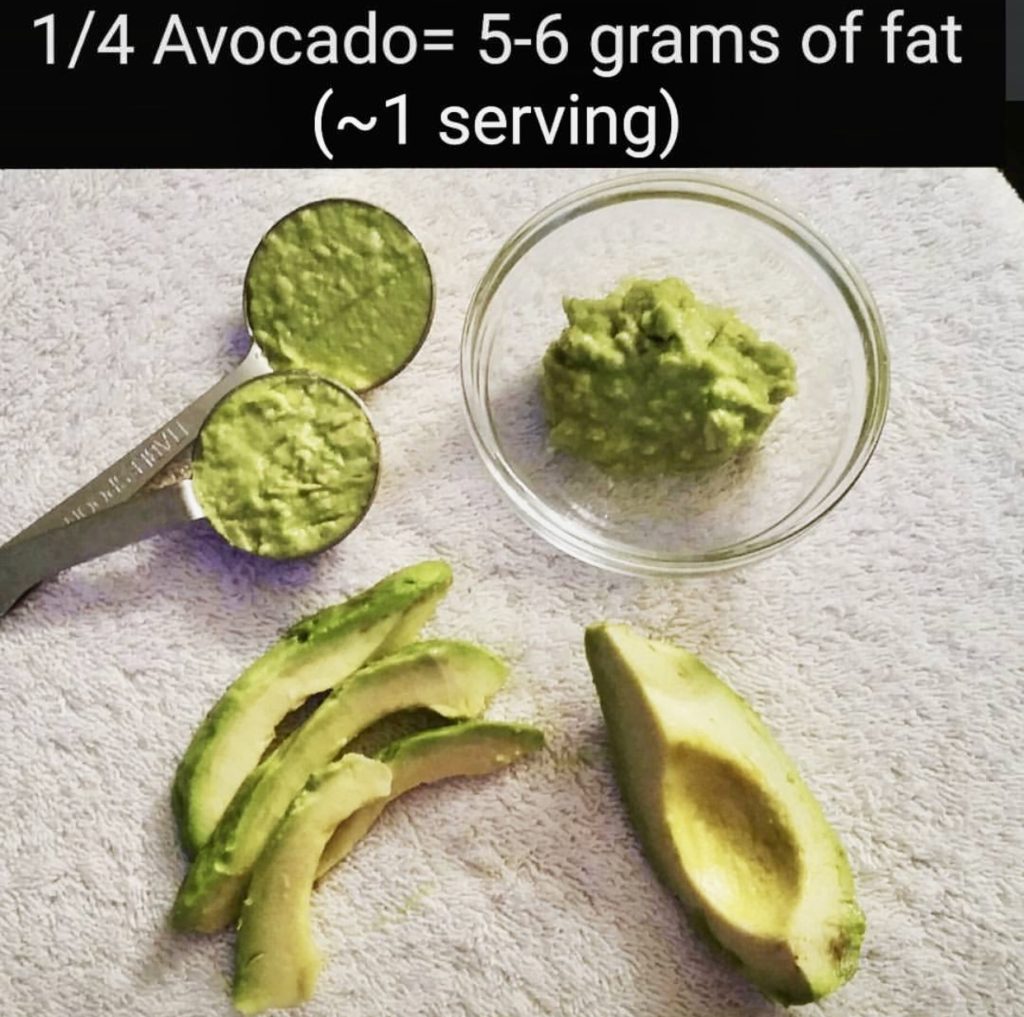
Benefits Beyond the Fat
The fat in avocados can aid in absorption of carotenoids from other foods, but they also have a reasonable amount of carotenoids themselves. This may be surprising, since carotenoids are often associated with orange and red foods, but this green fruit contains lutein, zeaxanthin, alpha-carotene, and beta-carotene. Due to their phytochemical content, avocados have been studied regarding their potential to decrease risks of various types of cancer (as explored in this review), as well as decrease the risk of cataracts and macular degeneration. Some research has also indicated that avocados may have beneficial anti-inflammatory and vascular health effects. Some of these health benefits may likely be linked to the fiber, potassium, vitamin E, and vitamin K content of avocados.
Choosing, Keeping, and Preparing Your Avocado
Do not choose your avocado based on color, since color will vary by variety. Instead, choose an avocado that is firm and free of soft spots. If you purchase an unripe avocado, keep it in a brown paper bag at room temperature. If you’re anxious to eat your avocado, place either apples or bananas in the bag with it – they produce ethylene gas, which speeds the ripening process. When the avocado gives way to gentle pressure, it is ripe. A ripe avocado can be kept in the refrigerator for 2 – 3 days, uncut. Once cut, the avocado’s flesh is susceptible to oxidation, which will produce a brown color. To avoid this, sprinkle lemon juice on any uneaten avocado, place it in an airtight container or plastic wrap, and keep it in the refrigerator.
Although opening an avocado may seem intimidating, it’s simple. Simple cut it down the center and twist it open. The beneficial carotenoids are most concentrated in the dark green flesh nearest to the skin, so be sure to get as much of that as you can!
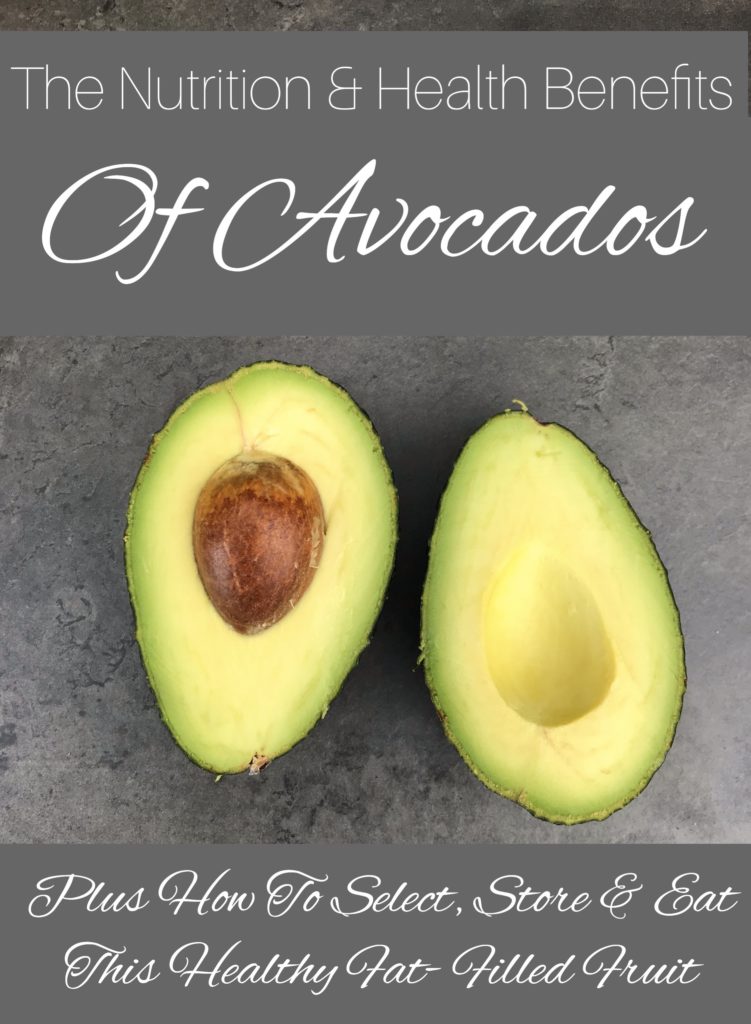
Ways to Enjoy Avocados (And Substitute Unsaturated Fats for Saturated Fats)
- Make homemade guacamole. Enjoy with baked whole-grain chips or raw veggies. This is a great option in place of cheese-based or cream-based dips.
- Avocados and baking? Yes! Use avocados instead of butter in your next brownie recipe (1:1 ratio). This is another great way to substitute healthy fats for unhealthy fats.
- Add an avocado-based sauce to your pasta. It still has the cream texture without the high-saturated fat content of cream-based sauces like Alfredo.
- Mash a serving of avocado with Greek yogurt and tuna, chicken, or hard-boiled eggs to kick up your typical tuna, chicken, or egg salad
- Mash it and spread it on toast. Try this avocado and egg toast.
- Add one ounce of diced avocado to your leafy green salad
- Use 2 tablespoons of avocados as a spread or 2 – 3 slices as a topping on your sandwiches or burgers
- Add a few tablespoons to a smoothie for a smooth, creamy texture too
It’s not often that you can use a fruit while baking sweets and as a savory dip. Avocados have proven to be an unusual and versatile fruit, but remember to enjoy them in moderation!


 Hi, I’m Heather – a registered dietitian, busy mom, consultant, adventure junkie and travel addict who has mastered living healthy on the go. My blog is where I share simple recipes and healthy living tips to help and inspire others to live their best life.
Hi, I’m Heather – a registered dietitian, busy mom, consultant, adventure junkie and travel addict who has mastered living healthy on the go. My blog is where I share simple recipes and healthy living tips to help and inspire others to live their best life.
This is so eye opening. I’m realizing even though they are healthy, I still have to pay attention to how much I eat.